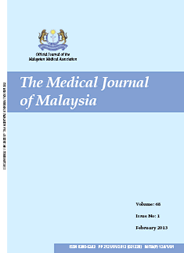MJM, Vol 70 Supplement 1 September 2015
Spatial density of dengue incidence to improve
environmental health risk: a case study of a dengue outbreak in Seksyen 7, Shah
Alam
ABSTRACT
Introduction: Dengue is a major vector-borne disease caused by any one of four closely related dengue viruses. The viruses are transmitted to humans by the bite of an infected mosquito (Aedes aegypti or Aedes albopictus). Seksyen 7, Shah Alam is one the locality with high incidence of dengue fever. This study aimed to establish spatial density of dengue incidence in Seksyen 7, Shah Alam using Geographical Information System (GIS) and spatial statistical tools.
Method: We analysed 23 ovitrap index and 2389 dengue cases from 2013 to 2014. Data were collected from Petaling District Health Office and Shah Alam City Council. Spatial statistical tools were used to show spatial correlation of dengue cases and kernel density was implemented to identify dengue hotspot localities.
Results: The results showed that dengue cases were spatially clustered (p<0.001) by using spatial autocorrelation analysis. Average Nearest Neighbour analysis showed that dengue cases were highly clustered and occurred at an average distance of 219.2 meters. Location especially residential areas had been identified as hotspot by using kernel density estimation analysis.
Conclusion: Our results showed that GIS and spatial statistical tools could be an effective mean to establish spatial density of dengue. Mapping of dengue cases would serve as a guidance for stakeholders to identify source of outbreaks. It will generate more hypotheses and further investigations. Understanding the spatial of Aedes index and its impact on human health, particularly outbreaks of dengue is important in controlling the transmissions of the disease.
Keywords: dengue, outbreak, GIS
